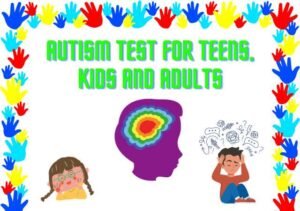 Autism Test for Teens | Kids | Adults: In the realm of autism assessment, a balanced and organized approach is integral to developing a nuanced understanding of a person’s condition. The autism assessment process is one of the most challenging pathways that the families of people on the autism spectrum have to travel, but it can make all the difference in understanding and supporting individuals on it with the right approach. Assessment may involve extensive exploration of the client’s history, an assessment of social communication ranges from low motion joint flexibility to physically expressive behaviors of mannerisms, and evaluations of restrictive and repetitive behaviors. This guide discusses autism tests for every age group, including autism tests for teens, kids, and adults.
Autism Test for Teens | Kids | Adults: In the realm of autism assessment, a balanced and organized approach is integral to developing a nuanced understanding of a person’s condition. The autism assessment process is one of the most challenging pathways that the families of people on the autism spectrum have to travel, but it can make all the difference in understanding and supporting individuals on it with the right approach. Assessment may involve extensive exploration of the client’s history, an assessment of social communication ranges from low motion joint flexibility to physically expressive behaviors of mannerisms, and evaluations of restrictive and repetitive behaviors. This guide discusses autism tests for every age group, including autism tests for teens, kids, and adults.
The article goes into detail about some specific screening tools, including the Modified Checklist for Autism in Toddlers-Revised with Follow-Up (M-CHAT-R/F). Autism Diagnostic Interview-Revised (ADI-R), Brief Autism Screening: for example The Modified Checklist for Autism in Toddlers, Level 2; also known as The M-CHAT™; Autism Screening Tool for Two-Year-Olds; and other formal test tools such as the Childhood Autism Rating Scale 2 (CARS-2) and Autism Diagnostic Observation Schedule – Generic (ADOS-G) In summary, these comprehensive resource guides practitioners through the various factors that need to be assessed, including comorbid conditions, orofacial examination, speech and language and hearing assessments, providing valuable contribution to the lives of practitioners, educationalists and researchers alike to illuminate a better path through the darkness for the future or those on the autism spectrum and their caregivers.
Autism Test for Teens | Kids | Adults: Overview
The process of assessing autism is complex and multifaceted, and a well-structured approach is needed to build a reasonable picture of the person’s diagnosis. This summary will cover some aspects of the assessment process, including consideration of the client’s history and assessment of social communication skills. We will explore the tools used for autism screening and formal testing and assessment of Restrictive and Repetitive Behaviors in the sections that follow. Cofactors include comorbid conditions, detailed orofacial examination, speech, language, and hearing assessment. This series and synthesis of assessments lead to a diagnosis and ultimately, a key piece of information that begins to define a treatment plan for a person with autism and their family.
The following detailed guide explores this often-consuming process in detail, focusing on the need for a transdisciplinary approach to understanding and supporting autistic individuals.
- History of the Client
- Assessment of Social Communication
- Autism Screening Test
- Autism Formal Testing
- Restrictive and Repetitive Behaviors
- Comorbid Conditions
- Orofacial Examination
- Speech and Language Assessment
- Hearing Assessment
- Determining the Diagnosis
- Providing Information
History of the Client
- Written Case History
- Information-Gathering Interview
- Information from Other Professionals
- Medical or Neurological Factors
- Age and Intelligence
- Situational Demands
Assessment of Social Communication
Diagnostic and Statistical Manual of Mental Disorders 5th Edition (DSM-5)
The Diagnostic and Statistical Manual of Mental DisordersDSM, published by the American Psychiatric Association. It is the definitive source for defining disorders of deviant speech language behavior such as social communicative disorders and autism spectrum disorders. Autism Spectrum Disorder (ASD) was radically redefined in 5th edition of DSM (DSM-5, 2013). The previous diagnostic subcategories for autistic disorder — Asperger disorder, childhood disintegrative disorder, Rett syndrome, and pervasive developmental disorder not otherwise specified — have been collapsed into a single diagnosis of autism spectrum disorder with assocaited levels of severity. For a diagnosis of ASD both areas must show evidence of deficits. Each area is then given a severity rating, depending on how much support it needs. The severity values are:
Level 1 — Requiring support
Level 2 — Requiring substantial support
Level 3 — Requiring very substantial support
A more comprehensive list of ASD symptoms can be found in Table: Diagnostic Criteria for Autism Spectrum Disorder. The severity indicators are depicted in Table: Autism Spectrum Disorder Severity Indicators.
Diagnostic Criteria for Autism Spectrum Disorder |
| All five of these criteria must be present to positively diagnose ASD: |
|
Autism Spectrum Disorder Severity Indicators | ||
| SEVERITY LEVEL | SOCIAL COMMUNICATION | FIXATED INTERESTS AND REPETITIVE BEHAVIORS |
| Level 1: Requires Support |
|
|
| Level 2: Requires Substantial Support |
|
|
| Level 3: Requires Very Substantial Support |
|
|
Autism Screening Test
Modified Checklist for Autism in Toddlers-Revised with Follow-Up (M-CHAT-R/F) (Robins, Fein, & Barton, 2009)
The M-CHAT-R/F is a reliable and widely used screening tool. It aims to detect early indicators of autism spectrum disorder (ASD) in toddlers ages 16 to 30 months. It is a parent questionnaire covering the child’s functioning in the domains of maternal behavior and social interaction. The new version (M-CHAT-R) consists of 20 yes/no questions very specifically detailing the child’s response to stimuli and interaction. If any of the “risk” items have been flagged, follow up with a further interview (M-CHAT-R/F) in order to collect further details. The M-CHAT-R/F is available for clinical use in the public domain for download—free on www. m-chat. org, so it is avail for health workers and parents too.
Screening Tool for Autism in Two-Year-Olds (Stone, Coonrod, & Ousley, 2000)
This screening tool, created by Stone, Coonrod, and Ousley, is meant for the early detection of autism in two-year-old children. It is a structured series of play and interactive observations to analyze the child’s areas of socialization and communication. The tool is designed to help flag potential red flags for autism at an age where early intervention may be especially valuable. Although it is not the most common screen in use, it can help to establish where a child falls on developmental markers, leading to early identification of autism.
Social Communication Questionnaire (Rutter, Bailey, Lord, & Berument, 2003)
The Social Communication Questionnaire (SCQ) is a screening tool used to evaluate social communication ability and identify possible indicators of autism spectrum disorder. Rutter, Bailey, Lord, and Berument’s one includes a parent-reported questionnaire that addresses a range of social interaction, communication, and behavioral domains. The SCQ is appropriate for use for individuals aged 4 and older and is widely used in both clinical and research settings. It can be a helpful tool for professionals as they evaluate and diagnose autism spectrum disorders by offering a quantitative measure of social communication challenges.
Autism Formal Testing
Childhood Autism Rating Scale 2 (CARS-2)
The CARS-2 is a standardized tool for assessing severity of ASD in children. It is participated in by direct observation of the child’s behavior and interactions, and rates content such as socialization, communication, and repetitive behaviors. The scores assist in classifying the child on the autism spectrum.
Gilliam Autism Rating Scale – Third Edition (GARS-3)
GARS-3 is designed to standardize an assessment tool using a three part assessment that allows the user to quantify autism spectrum symptoms and classify those symptoms into levels of severity and type. It consists of three subscales such as Stereotyped Behaviors, Communication, and Social Interaction. Results help in both diagnosis and interventions for a person suspected of having autism.
Autism Diagnostic Observation Schedule – Generic (ADOS-G)
The ADOS-G is a semi-structured, standardized instrument for the diagnosis of autism spectrum disorders. These activities and social interactions provide opportunities for trained professionals to observe and assess the individual’s communication, social interaction, and imaginative play abilities. It is commonly relied upon with other assessment tools.
Autism Diagnostic Interview-Revised (ADI-R)
ADI-R is a semi-structured, comprehensive interview administered to parents or caretakers to gather extensive information about the child’s behavior and development. It examines early developmental history, communication, social interaction, and repetitive behaviors. This information is essential for making an accurate diagnosis of autism.
Indian Scale for Assessment of Autism (ISAA)
The tool has been translated and culturally adapted for the assessment of autism spectrum disorders in Indian child populations. It is used by professionals in India, taking care of cultural subtleties. It has been used to assess multiple domains of autism such as social communication, sensory issues and repetitive behaviours essentially providing a holistic overview of the Indian population.
Formal testing instruments are essential for the evaluation and diagnosis of autism spectrum disorders and aid in gathering specific data about an individual to help clinicians, educators, and researchers understand how to assist a person on the autism spectrum.
Restrictive and Repetitive Behaviors
Restrictive and repetitive behavior assessment refers to the process of evaluating patterns of behavior that may be characteristic of autism spectrum disorder (ASD). This includes tracking repetitive movements, rigidity in routines, narrow and highly-focused interests, as well as resistance to change.
Comorbid Conditions
Assessing comorbid conditions means to identify co-occurring disorders or conditions which may occur in conjunction with ASD. These are likely to include ADHD, anxiety, depression or intellectual disabilities. Recognizing comorbidities is essential for creating a holistic management plan.
Orofacial Examination
Orofacial exam to assess the motor skills and coordination of the muscles involved in speech and communication. They also show any oral-motor problems that can impede the ability to speech production or for that matter, any aspects of conversational speech.
Speech and Language Assessment
Expressive and Receptive language skills are evaluated in an assessment of speech and language. This covers areas of vocabulary, grammar, articulation, and the use and understanding of language in social situations.
Hearing Assessment
A hearing testing is done to exclude hear impairments which can cause trouble in communication. It makes sure that any noted communication challenges are not merly due to hearing problems.
Determining the Diagnosis
Assessing the diagnosis of Autism Spectrum Disorder involves pulling together information from different assessments. Specifically, this means synthesizing information from social communication perspectives, restricted and repetitive behaviour criteria, comorbidities, and other assessments in the context of making a final diagnosis.
Providing Information
Also, detailed information is an important part of the assessment process. This means giving feedback on how the individual fared on the assessments to the individual itself, their family, and other relevant stakeholders. To have a shared understanding of the diagnosis, strengths, challenges, and possible interventions or support strategies, you must communicate clearly and thoroughly.
Autism Test for Teens
It’s important to remember that teenagers have specific challenges when it comes to autism assessment, and that’s why the Autism Test for Teens was created. This personalized focus considers the different social and communicative features that arise at the teenage level.
For teens, the diagnostic journey starts with an in-depth review of their history — milestones in their development, their social relationships and patterns of behavior. We have administered tests targeting the social elements of communication, including difficulties in reciprocal interactions, nonverbal communication, and relationship development.
One important tool in your autism assessment toolkit for your teen is the Autism Screening Test. One commonly-used tool is the Modified Checklist for Autism in Toddlers-Revised with Follow-Up (M-CHAT-R/F), which early on was amended to attention suspected signs of autism in classes of 16 to 30 months. This is a parent-reported questionnaire that examines the teen’s behavior in a number of social and communicative domains, with recommended follow-up interviews for flagged items.
Autism Formal Test for Teens
A typical testing phase may include official testing tools such as Childhood Autism Rating Scale 2 (CARS-2) and the Gilliam Autism Rating Scale – Third Edition (GARS-3). These assessments measure the severity of autism spectrum disorder (ASD) in teens based on socialization, communication and repetitive behaviors.
The gold standard in assessment for ASD involves assessments of restricted and repetitive behaviors, including repetitive motor movements, echolalia, insistence on sameness, restricted interests, and sensory issues. We take a closer look at comorbid conditions, like ADHD or anxiety, to create comprehensive treatment plans. However, an orofacial examination is vital in examining motor skills necessary for speech and communication and it can identify oral-motor factors that may impact expressive language.
Speech and language evaluations focus on both expressive and receptive language skills, while hearing assessments eliminate auditory disabilities as contributing factors. This all comes together on the last step, where you bring together this disparate information from various assessment, establish a diagnosis, then essential — provide the information. This step provides clarification of results to teens and their families as well as stakeholders, establishing a common foundation to understand the diagnosis so individualized interventions and support strategies can be developed. Hence, the Autism Test for Teens becomes an essential aspect of the comprehensive process of recognising and supporting young adults within the autism spectrum.
Autism Test for Kids
Diagnosis of autism spectrum disorder (ASD) in children is a complex process that requires an in-depth consideration of multiple elements to establish an accurate diagnosis. The first step in the assessment process is a comprehensive history of the client, including written case histories, data-collection interviews, and reports from other professionals.
The DSM-5 (Diagnostic and Statistical Manual of Mental Disorders 5th Edition). This is a crucial resource, offering a new definition for ASD and an assessment of social communication deficits and repetitive behaviors. The level of support required determines the level of severity, including Level 1 needed support, Level 2 requiring substantial support, or Level 3 which is very substantial support. Early childhood onset of symptoms, as well as their impact on relationships and functional domains, is important for diagnosis.
Autism Formal Tests for Kids
To simplify the evaluation process, clinicians employ several screening measures, such as the Modified Checklist for Autism in Toddlers-Revised With Follow-up (M-CHAT-R/F), Screening Tool for Autism in Two-Year-Olds, and Social Communication Questionnaire.
Clinically formalized, CARS2, GARS3, ADOS-G, ADI-R, and ISAA were used for assessment [1, 4–7]. They include detailed assessments of social communication skills, repetitive behaviours, and the degree to which behaviours vary across cultures, facilitating accurate diagnoses.
Auditory-perceptual evaluation is also a part of these evaluation processes along with orofacial assessments, OPE, and hearing assessments. These more targeted assessments can uncover motor skills or speech production issues, and even hearing impairments, which might play a role in communication difficulties.
Clinicians consider findings from numerous assessments to arrive at diagnostic consensus. The results of the assessment should be communicated to the individual, their family and key stakeholders who embody the motive of having an amicable understanding of the screening and assessments results for mutual approach towards improving overall care. Autism in children is diagnosed using a methodical, team-based process to provide customized assistance for those with the condition.
Autism Test for Adults
The diagnosis of Autism Spectrum Disorder (ASD) in adults, including women and men, is a complex process that requires the assessment of multiple domains. The assessment starts with an in-depth exploration of the client’s history, through written case history, information-gathering interviews, and information from other professionals. We account for a breadth of factors, from medical and neurological conditions to age, intelligence, and situational demands, in order to develop a more holistic understanding of the individual.
Helpfully, the Diagnostic and Statistical Manual of Mental Disorders 5th Edition (DSM-5) drafts a comprehensive definition of ASD. The DSM-5 simplifies the diagnosis into one category, of degrees of severity. Criteria such as markedly impaired social communication and the presence of restricted and repetitive interests and behaviors Severity is classified across three levels: requiring support, substantial support, and very substantial support.
There are various screening tools that help identify early..include(“m-chart”)The Modified Checklist for Autism in Toddlers-Revised with Follow-Up (M-CHAT-R/F): This is the most widely used questionnaire for toddlers, and its social and communicative behaviors are specifically related to autism spectrum disorders. For detecting early signs of autism spectrum disorder (ASD) in young children, the Screening Tool for Autism in Two-Year-Olds and the Social Communication Questionnaire are other tools developed specifically for this purpose.
Autism Formal Tests for Adults
Such diagnosis relies heavily on formal testing tools. The Childhood Autism Rating Scale 2 (CARS-2), Gilliam Autism Rating Scale – Third Edition (GARS-3), Autism Diagnostic Observation Schedule — Generic (ADOS-G), Autism Diagnostic Interview-Revised (ADI-R) and Indian Scale for Assessment of Autism (ISAA) are allks helpful in measuring both severity and assessing culture. These tools allow professionals to organize symptoms, create a plan of action and provide assistance.
The evaluation involves numerous dimensions such as social communication, repetitive and restrictive behaviors, comorbid conditions, oafacial examination, speech and language evaluation as well as listening evaluation. A holistic diagnosis results from synthesizing information from these assessments. Communicating results is vital for achieving a common understanding about the diagnosis, strengths, challenges, and possible interventions for individuals on the autism spectrum.
Overall, the evaluation for Autism Spectrum Disorder in adults requires careful consideration and thoroughness, with a combination of historical, observational, and formal measures taken to facilitate a comprehensive impression of the individual within the context of their unique profile.
Conclusion
Assessment of Autism Spectrum Disorder (ASD) in adults and children is a multi-faceted and holistic process utilising a wide range of techniques and tools, A systematic approach which a multi-disciplinary team contributes to an individual assessment of a person so that the diagnosis is not rushed or made lightly with full consensus among experts; An important outcome is the consensus agreement on formal diagnosis which indicates the role that early intervention might have; Furthermore there is a scale of severity of need and condition of ASD. An historical overview of the client including, written case histories, interviews, and collateral information from other providers helps to develop a picture of the client unique to their profile. The DSM-5 is an important tool, which reduces the previous diagnoses into one diagnosis with different severities while also focusing on impaired social communication and the presence of restrictive and repetitive behaviors.
Screening tools like the M-CHAT-R/ F, Screening Tool for Autism in Two-Year-Olds, and Social Communication Questionnaire support early Identification. This allows to provide early intervention to toddlers and young children to mitigate any risks of developing ASD.
Moreover, formal testing tools such as the CARS-2, GARS-3, ADOS-G, ADI-R, and ISAA are crucial during assessment of severity and consideration of cultural factors. They help in assessing and analyzing symptoms, guide interventions, and provide professionals, educators, and researchers with valuable insights.
The assessment includes evaluation of social communication, restrictive and repetitive behaviour, comorbid conditions, oro-facial examination, and appropriate speech and language and hearing assessment. Based on these assessments, integrators must synthesize the data for a diagnosis, and pay for some tailored support strategies.
FAQs about Autism Test for Teens | Kids | Adults
Where can you get tested for autism as an adult?
For adults, evaluation for autism is typically done with a mental health provider — usually, a psychologist or psychiatrist with expertise in developmental disorder assessment. Referrals may also come from general practitioners and neurologists. Adults may be assessed at community mental health centers or autism clinics.
Where can I get my child tested for autism?
PICOT question: In parents seeking an autism assessment for their child, does accessing pediatricians, child psychologists, developmental pediatricians, or child psychiatrists lead to a (positive) long-term outcome? Assessment services may also be provided through local school districts. Evaluations for children are typically conducted at autism clinics, specialized centers or early intervention programs.
What are the criteria for diagnosing Autism Spectrum Disorder (ASD) in adults?
The DSM-5 (Diagnostic and Statistical Manual of Mental Disorders 5th Edition) specifies criteria to diagnose mental disorders in adults. It includes measuring impairments in social communication, restricted and repetitive behaviours, and severity levels. Experts assess these factors using a mix of interviews, observations and standardized tests.
Are there screening tools available for early detection of autism in toddlers?
Yes, there are multiple screening tools available to detect autism early, including the Modified Checklist for Autism in Toddlers-Revised with Follow-Up (M-CHAT-R/F), the Screening Tool for Autism in Two-Year-Olds, and the Social Communication Questionnaire. These tools have been designed by the designers to be used in the identification of signs of autism in toddlers aged 16 — 30 months.
How is the severity of Autism Spectrum Disorder assessed in children?
These professionals typically use a number of tools to assess the severity of ASD in children including Childhood Autism Rating Scale 2 (CARS-2), Gilliam Autism Rating Scale – Third Edition (GARS-3), Autism Diagnostic Observation Schedule – Generic (ADOS-G), Autism Diagnostic Interview-Revised (ADI-R) and Indian Scale for Assessment of Autism (ISAA).
References:
- Language Disorders from Infancy to Adolescence 4th Edition – Rhea Paul [Book]
- Assessment in Speech Language Pathology A Resource Manual 5th Edition, Kenneth G. Shipley, Julie G. McAfee [Book]
- The American Academy of Pediatrics (AAP) in their guidelines on developmental surveillance and screening (AAP).
- The National Institute of Mental Health (NIMH) provides insights into the social challenges faced by individuals with ASD (NIMH).
- Research from the Autism Science Foundation sheds light on the various communication differences observed in individuals with ASD (Autism Science Foundation).
- The work of Dr. Temple Grandin, a renowned expert with ASD, provides valuable insights into sensory sensitivities (Dr. Temple Grandin).


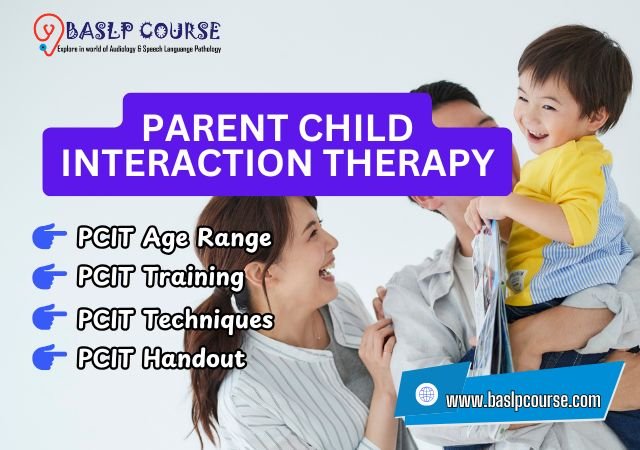
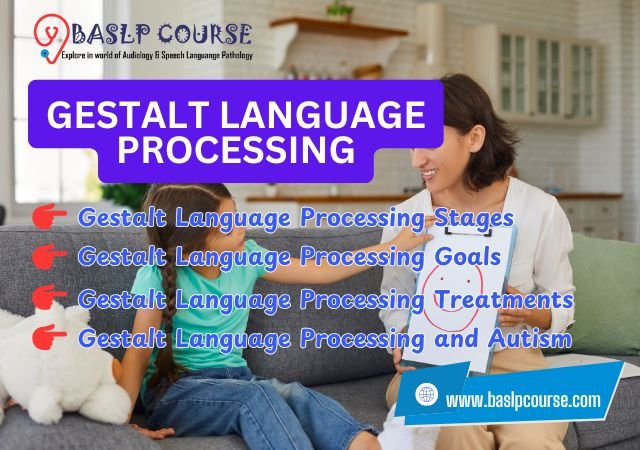

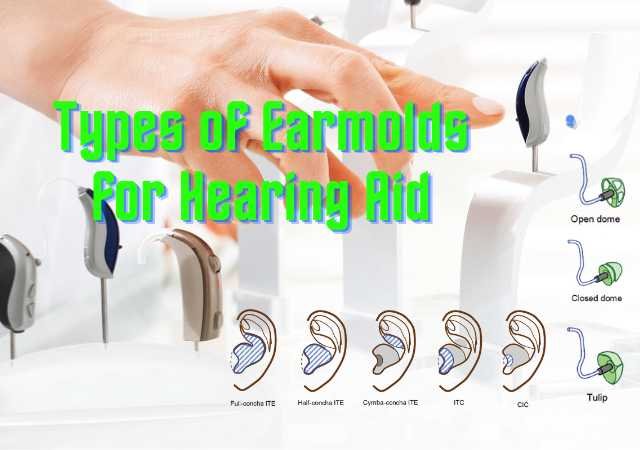
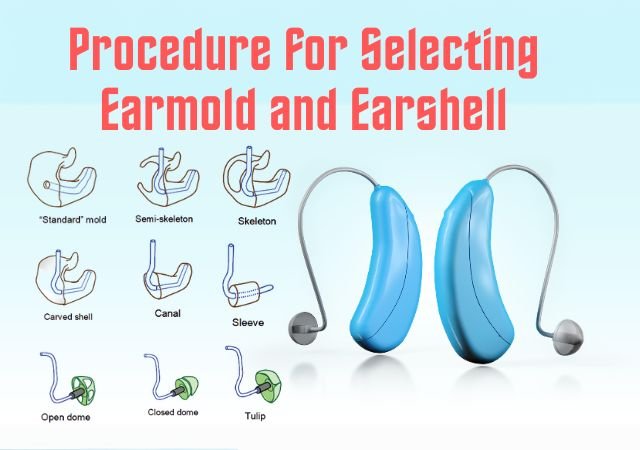
0 Comments